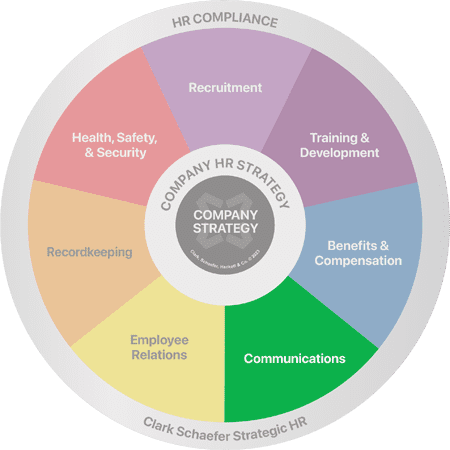Preventing A Hostile Environment
Question:
We’re hearing a lot about hostile work environments and bullying. What can we do to prevent a hostile work environment and harassment claims?
Answer:
Recent court decisions illustrate the need for employers to elevate all types of harassment to the list of important workplace issues. It is virtually impossible for employers to monitor or control all communications or workplace conduct especially with the increase in popularity of social networking sites (like Facebook or Twitter) and activities (blogging, etc.). However, there are some practical suggestions for preventing hostile work environment claims.
- Anti-Harassment Policy. Implement a policy that prohibits sexual harassment and harassment based on other protected classifications. It should specifically list the other protected classifications, including examples of the type of conduct that is prohibited by managers, supervisors, employees, customers, and third parties. Update your electronic communications policy to reflect new technological trends as well.
- Complaint Procedure. The policy must include a complaint procedure that provides for more than one option for filing a complaint so that an employee does not have to complain to a supervisor or other person who may be involved in the harassment. The policy should also contain a strong “anti-retaliation” statement, so employees will not hesitate to file a complaint and will feel confident in using the procedure.
- Distribution and Communication. Employers should distribute and communicate the policy to all employees, and the employees should be given an opportunity to ask questions. Each employee should be required to sign a verification acknowledging that the policy has been read and understood.
- Education. In addition to providing the employees the policy during their orientation, it is also helpful to provide periodic refresher information.
- Supervisor Training. Managers and supervisors are relied upon to be the “eyes and ears” of the company in case inappropriate conduct is taking place, so employers should carefully select individuals for these positions who will treat employees fairly and avoid inappropriate conduct. It is critical that supervisors receive additional training to educate them about their important role in preventing harassment in the workplace. Consider prohibiting management from “friending” other employees.
- Investigating a Complaint. Upon receipt of a complaint of harassment or when an employer has reason to believe that a potentially harassing situation has occurred, the employer must act promptly. The employer must investigate all complaints completely and objectively. Of course, the employee making a complaint should be notified as to the outcome of the investigation once a final decision has been made.
- Taking Appropriate Action. If the investigation results in a finding that harassment occurred, action must be taken so that the harassment is eliminated and does not reoccur. This may consist of disciplinary action including discharge, or other corrective action such as training.
You can never be 100% certain that a hostile situation won’t ever occur, but by putting the proper policies in place you can be sure that you are doing everything possible to help prevent it.
Having easy to read and understand policies and procedures can help alleviate a lot of problems in the workplace. Not only do they set the stage for what is deemed inappropriate, they can also provide guidelines for what is considered acceptable, and even expected, behavior. Strategic HR receives numerous requests to review and rewrite employee handbooks on a regular basis, especially with the number of recent federal guideline changes. If you haven’t updated your handbook in the last few years, now may be a good time. For more information on how we can help you with Employee Relations and employee handbooks, please visit our Employee Relations page.



